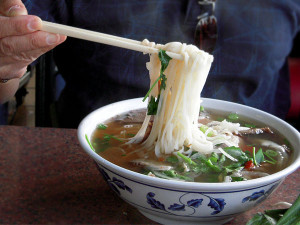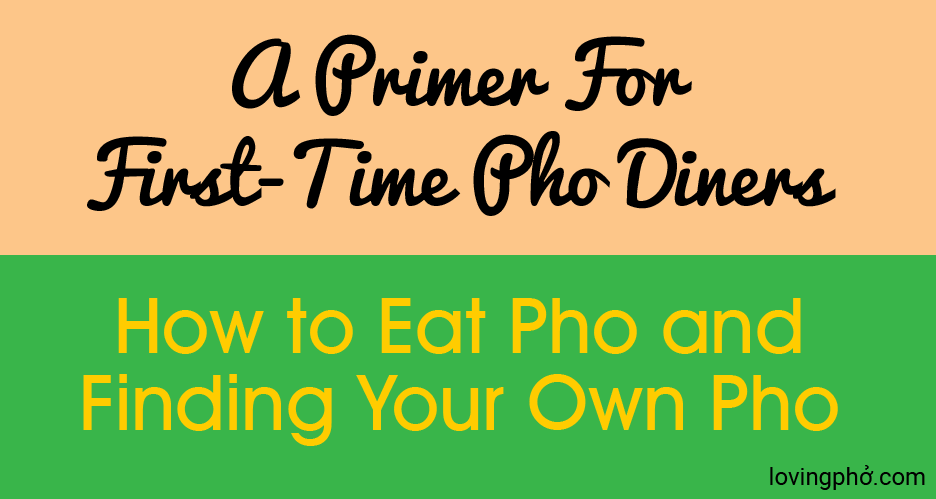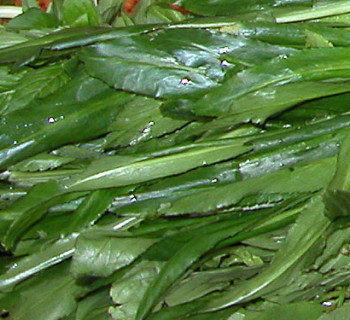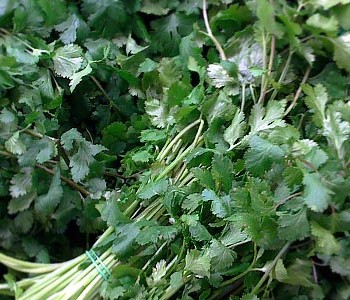Updated 03-14-15.  OK let's get back to the basics. Here's a primer for those new to Vietnamese pho. For the pho connoisseurs, please share your views and experience, or check out other posts at the end of this article.
OK let's get back to the basics. Here's a primer for those new to Vietnamese pho. For the pho connoisseurs, please share your views and experience, or check out other posts at the end of this article.
When it comes to pho, a Vietnamese would have the distinct advantage of knowing how to enjoy the noodle dish. Regardless of whether he or she grew up in the homeland or in an immigrant household overseas, he or she would have a mother or a grandmother who made this heart-filling noodle soup for breakfast each day, cooked using snippets of a recipe and with memories of how it is done in their own mother's kitchen. Or at the very least, he or she would have a mother who would herd the family to a restaurant every so often whenever they feel the urge. Eating pho is natural to a Vietnamese.
A non-Vietnamese will not have the same experience. Aside from having to deal with the chopsticks, pho will always look and smell foreign to anyone who did not grow up eating it. When faced with a steaming bowl of this noodle, and especially if it is your first time to sample the national dish of Vietnam, you may have a challenge on your hand. Here are some tips.
Simple Process of Enjoying Pho
If you find yourself in a pho shop for the first time, it's likely that a Vietnamese friend or a friend who knows this dish has invited you. But in the event that you are a real brave soul and decide to go try by yourself, figuring out how to eat pho can be a dilemma.
Thankfully, eating pho is not like eating Western food or even Japanese food. There is no unspoken etiquette that must be observed. This dish is meant to be enjoyed with some noise and a lot of slurping is just fine. So here's the process in a nutshell.
The best way to attack a steaming bowl of pho is to have chopsticks in one hand and a soupspoon in the other. Take in a little broth with your spoon, slurp in some to get a taste of it. Follow it up with the rice noodles using your chopsticks. Then select pieces of ingredients from the bowl and enjoy them individually or together with the broth and noodle. Easy. But there's more.
Taking in the Aroma
Of course, before you start eating pho, you cannot miss noticing the aroma created by the piping-hot broth. Just taking in the rich aroma of beef stock simmered for a really long time with spices, roasted onion and roasted ginger thrown in is enough to whet the appetite. The aroma of the broth really kicks up the anticipation of the poetry that is about to come from that bowl of pho.
The fragrance of the broth is also a good indicator of its quality. Just one sniff will tell you if the spices are balanced in making the soup, if the broth is too salty, if there is monosodium glutamate sprinkled in it, or if the beef stock itself is poorly made. Remember that the soul of pho is in the broth. So enjoying the scent is definitely an important part of the dining ritual.
What to Do With the Garnishing
 When you are served southern style Vietnamese pho, you will always be provided with a plate of garnishing. This plate would typically contain bean sprouts, culantro, Thai basil, sliced chili and lime wedges. Also you will have hoisin sauce and hot chili sauce available at the table.
When you are served southern style Vietnamese pho, you will always be provided with a plate of garnishing. This plate would typically contain bean sprouts, culantro, Thai basil, sliced chili and lime wedges. Also you will have hoisin sauce and hot chili sauce available at the table.
Is there a specific order by which you should place these herbs in your bowl of pho? The answer to this is no. With the garnishing, you can think of it as finding the best combination that will fit your taste. Each individual garnish contributes its own distinct smell and taste to an already good bowl of pho. You do not want to dump all the garnishing into the bowl at the same time. Rather, just try a few at a time to get your preferred mix. More importantly, give the ingredients several chances (on different visits) and you'll appreciate their roles in this noodle dish.
Here are a few tips on consuming the ingredients:
- Bean sprouts are put in raw for the crunchy factor. Add a little at a time to maintain the crunchiness as you eat, or add them all while the broth is hot to cook them. The downside here is it takes heat to cook your sprouts, and as a result your broth will cool before you finish your bowl of pho. This is why many people request blanched sprouts.
- Dipping the sliced chili in the hot broth releases the oil and makes the broth taste spicier. You can keep them in if you dare. Many do. But really, about half of the jalapenos are not all that hot. I prefer the smaller but hotter Thai peppers or similar varieties.
- Lime juice adds tartness to the broth, which is good if the broth tastes bland, too salty, or too sweet for you. The saltiness and tartness together provide a delicious combination that many people love - I'm one of them. I can do without the other things, but lime I must have.
- The herb leaves are stripped from the stems and can be shredded to bits by hand before they are placed in the bowl. For the best aroma and taste, don't drop them all in at the same time in the beginning. I tear the leaves in smaller pieces, and add them as I go to maintain freshest and uncooked flavor. Even down to my last few chopstickfuls of noodle, I'm still dropping in some fresh bits of basil and culantro. The fragrance is incredible.
Eating pho is always an adventure, even for those who have had it all their lives. For first-time diners, the key is to relax and enjoy. You'll find your own pho in no time.




Hi Cuong. I like your site. I usually just order a #1 at whatever restaurant I go to. I add some rooster sauce and don’t bother with the veggies. Delicious.
Hi Gary Lam: Yes #1 on the pho menu would get you pretty much what pho is all about, though I would highly suggest that you slow down and maybe enjoy a leaf of culantro or some basil just for the heck of it 😉
Huynh, you have a good site, I’m making a blog about Food va recipes. I hope you can help me something ? My blog is: http://www.vietnamesefood.biz .
Hi Vietnamese food: I appreciate your comment and I’ll be happy to help with anything you need. But first I would like to request that you remove articles on your site that are copyright infringement of 3 of lovingpho.com’s articles. They are:
http://www.vietnamesefood.biz/2010/09/pronouncing-pho-and-other-vietnamese.html
which is an unauthorized reproduction of this article:
/pho-opinion-editorial/pronunciation-vietnamese-words-phrases/
http://www.vietnamesefood.biz/2010/09/pronouncing-pho-you-can-say-it.html
which is an unauthorized reproduction of this article:
/pho-opinion-editorial/how-to-pronounce-pho/
http://www.vietnamesefood.biz/2010/09/pronunciation-of-bun-bo-hue-and-hu-tieu.html
which is an unauthorized reproduction of this article:
/pho-pronunciation-menu-ordering/pronounce-bun-bo-hue-hu-tieu-nam-vang/
Further actions are being taken to protect our content.
I am sorry to have 3 posts by https://www.lovingpho.com on http://www.vietnamesefood.biz without permission. I have removed that articles from http://www.vietnamesefood.biz . And again, if there is any hope for me to be associate with https://www.lovingpho.com for introduce online about good foods of our country.
Great comments. I enjoy my pho a little spicier than others so I put the chili sauce on the side in the little white dish that they usually have and I dip the meat or the noodles in the dish rather than pouring a bunch in and over powering the delicate broth.
Cool site, I got hooked on pho ever since my sister took me. I am south korean, so I wouldn’t know “good”/traditional pho, but have you ever heard of the restaurant pho 32? It’s run by other koreans, so it probably isn’t authentic, but it does have all the garnishes, sriracha sauce, and some brown sauce. What do you think of the place?
Hi Mariah: Yes dipping in the sauce is a great way to enjoy the ingredients in pho without mucking up the good broth, assuming the broth is good. Personally, like you, I do not put hoisin and chili sauce in my pho either. I enjoy the taste of the broth all by itself, so clearly pho with less than decent broth does not get my business 😉 I do like the tart acidity of the lime in my pho however, so I always have to have that squeezed in.
Hi New to Pho: I’ve not visited any Pho 32. You say it’s Korean owned? Where may one be located? I googled and found a Pho 32 in NY. Is that the one?
Yep, it’s in Queens which is in New york. Do you not live in New York? (if you don’t sorry, we new yorkers kind of assume everyone lives in NY ^^)
@New to Pho: No I’m in nice San Diego my man (I’m assume you’re a guy, if not, my apology 😉 Though I did visit NYC 3 years ago and would love to go back. Did take a tour of Queens though.
So if you like pho I’m sure you’d have tried places other than Pho32 right? I always tell people when they ask me questions similar to yours: there are a few rules that can definitely help such as 1) trying a variety of places to know what’s common/authentic/accepted pho versus what’s “creative” pho, 2) get a Viet friend’s opinion, 3) try a pho shop full of Viet people eating in it. In the end we’re not that much different then Koreans, in that I think you know how to find good authentic Korean restaurants with less effort than a typical non-Korean.
Something may also help is this article On Viet People’s Expectations, Standards, and Ideals for Pho vs. Non-Viet. I’d be very interested in trying the pho at the Korean owned Pho32.
Awesome site! I love your tips for eating Pho. I still remember my first pho experince in Victoria St of Melbourne… I have to admit i too was nervous and didn’t know what to do. Well now I am living in Lima Peru, where not yet do they have a Vietnamese restaurant. That doesn’t stop me from making my own though :). Check out my facebook album with the pics of it!
http://www.facebook.com/media/set/?set=a.215430771808731.62273.174418105909998&l=087505fa48
Hello Jason: Thanks for sharing your home-made pho. It’s quite complete and I’m impressed! So that clear noodle is rice noodle? Never seen it like that, but the whole “El phở de Jason” looks great. By the way, how’s the beef in Peru compared to that of Australia?
Thanks Cuong!
Yeah it is rice noodle but it was some expensive chinese one. I prefer the normal white ones i just decided to buy those in search of the best! It’s alot harder to get a hold on Asian ingredients here altough chinese ingredients aren’t too hard. It isn’t like Australia where you have a lot of choice in the supermarket though. I have to go to the center of the city! The beef I have to admit isn’t heaps good, it is a shame because it could be with the wonderful natural environments we have here. We do have at hand imported Angus from the US and also beef from Argentina and Brazil. The beef from brasil is a good value for quality option 🙂
Jason: Peru has never been the hotbed of Vietnamese foods for obvious reason. It’s very much the the same as when the Vietnamese first came to North America in the 70’s. We were lucky to find white rice and soy sauce at a local Chinese market. I remember I would eat just steamed rice and soy sauce and be content for the whole month! Authentic ingredients are definitely important for making an authentic dish.
Finally! Someone to tell me if I’ve been embarrasing myself for the last six months… I love noodles of all kinds and discovered a local place called Pho 79 and have enjoyed their offerings ever since. if I were Buddhist, I might suspect that I was Asian in a previous life from the feeling of “being home” the aromas and flavors brought to mind.
Hi Bear: So what have you done that may be considered embarrassing? Care to share?
Nothing in particular Cuong. Just trying to figure out the Thai vs. Chinese manners thing. I grew up with a pair of Chinese/Irish boys and their first generation Chinese grandmother and she introduced me to many of the foods she cooked, but she didn’t know more than “you try” and “you like?” and the boys were too bored to sit and translate, so I got a grand introduction to bok choi, Chinese pickles, five spice powder and so many other flavors, but almost no explanations, names or understanding of the social aspects which went with the foods. At the table, she often had me ape her actions and rewarded me with a smile or a frown for my manners. I learned that a gentle slurp of broth made her smile like the sun, mixing sauce with rice was acceptable and that biting off a noodle got me a shocked frown. As time has gone on, I’ve grown to understand that family eating is the ideal, slurping is a sign of enjoyment and a compliment to the chef, the Chinese don’t view white rice the same as the Japanese and that biting/breaking a noodle is a sign of shortening life. No one at Pho79 has said anything about my slurping, huntched over my bowl with a spoon in my left and a pair of chopstickes in my right hand, looking like I could stick my face in the bowl at any minute!. I just don’t know what manners I should be following and I want to compliment the staff and the cooks in a way they understand, beyond just telling them. I also have a dream (which will probably never come true, but who knows) of eating my way through SE Asia and I’d like to arm up in advance.
Bear: Well said and thanks for sharing your thoughts! If anything, i think you are right on with your understanding and attitude toward the most basic of human behavior: eating and the enjoyment of eating. See you at a pho shop sometime soon.
Now, you know why I’m as heavy as I am and earned every pound! Happy Pho!
Hi… I love pho but so far have stuck with chicken. After having had it approximately 10 times, I’m unable to try anything different…so addicted have I become to this previously unknown and strangely hypnotizing flavor combination. I’ve resorted to picking mint to garnish any leftovers but have asked my husband to plant Thai basil in Spring so I can be happy, lol. Everyone seems to talk about beef here so I will resolve to try it soon. I’m not the best cook but would love to attempt my own version someday. It’s getting expensive for takeout and my daughter wonders
why we go over and over again to the same vietnamese place. She wants to branch out but I play the parent card and say when she pays she can pick. I really enjoyed reading about pho and am happy to discover my manners were instinctually good…although I did bite off my noodles…will stop that from here on out. It’s so relaxing to have a slurpy good time and not be embarassed about my family’s noisemaking. Thanks for the educational experience…oh why oh why did I marry a pirogi maker? Give me pho or give me death!
Barbara: Yes pho is hypnotizing, as you put it. Beef pho has always been popular, but our first pho restaurant Ui-Cha! on the University of Montana campus in Missoula is doing strange thing: chicken pho is pushing up in terms of quantity sold, so beef pho is being challenged in a serious way. When done right, chicken can be very very good. So don’t give in to the mass. Just enjoy what you enjoy 😉
I love Pho Ga when I’m feeling run down or feeling like I’m getting sick. My favorite place has the most flavorful chicken broth!!!
Bear: So it’s like the new chicken noodle soup to help cure your cold? Nice…
Hi,
Love this website! I am currently sitting in my hotel room in the Old Quarter of Ha Noi drooling over this post about pho! I can’t wait to try it!
Thanks for the great tips on eating pho!
Peter: You are one lucky man to be there to take in all the great foods and atmosphere! Enjoy!
Had Pho Chin today at Pho 10 on Hang Manh this morning garnished with 1 lime wedge and some chillies… WOW! what a treat! Recommend this to everybody! Can’t wait to try Pho Ga when I get a chance.
Oh and I ate it like a pro with your tips! Cheers!
Peter: simple is good, don’t you agree? with Northern pho, one does not need all the elaborate garnishes and sides.
OK, so biting off the noodles is a no-no. But, how then to deal with them?
With Italian spaghetti it is easy to twirl around your fork, but with chopsticks and pho, I can’t. Help!
Hi Karen: Well you just slurp them in, that’s what you do. If you are not into making slurping noise, then slurp quietly 😉 Yes it can be done. In the end, it’s how you use the chopsticks to get them to your mouth first, the rest should be as natural and easy as a slight slurp to pull the rest of the noodle in. Alternatively, many people use their chopsticks to get just enough noodle onto the soup spoon (I must say the Chinese soup spoon is one of the greatest inventions of humankind) then the rest is also easy. Here’s an illustrated version of what I just described: http://martha-teresa.blogspot.com/2010/08/how-to-eat-pho-starring-adam.html
Hey Karen,
If you ever wanted to learn how to slow down and eat deliberately, Pho with chopsticks is a perfect training ground! Take a couple of strands of noodle at a time and slurp them in.
Karen and Bear: Yes it seems with respect to noodles, pasta, etc. the choices are 1) biting them off or 2) slurping them. So with Karen’s dilemma of what to do if biting them off is a no-no, then the remaining choice is slurping, maybe starting with what Bear says, take a couple of strands at a time until you get used to (or comfortable) doing it. But here’s another take on this that I will put out there for your consideration:
– The joy of eating noodle and pasta is very much in the eating or slurping of the long strands. The texture, the taste, the feel is incomparable in any other foods that we invented. We all know this. So there really is nothing wrong with biting the banh pho noodle off with each portion that you eat. The only thing is, by the second half of your pho bowl, you will have shorter and shorter banh pho noodles to eat. What you’d end up with are short noodle pieces like what you get from the Campbell Noodle Soup can. I would not want this and think it is not acceptable to most noodle lovers either.
I just read this while eating my first pho ever. I can’t believe I didn’t try this until now. I am in love. Great site by the way.
@Matt: Thanks for visiting LovingPho.com. Glad you tried pho and loved it. I’m sure it will be one of your favorite comfort foods for the rest of your life!
This is a wonderful site! My boyfriend took me for my first tastes of this wonderful food while i was pregnant with my daughter and wow i found my comfort food! I was very intimidated by the bowl and chopsticks… I’m not a stranger to them but i found myself overwhelmed. He told me to pile the noodles in the spoon then place the meat and vegetables ontop and i found this very awkward. Had he been doing this wrong, haha? He makes pho at home and its very good! Currently i am trying to make Boba tea at home so i can have this wonderful combo whenever i want. 😀
Angelica: The etiquette discussed in this article is based on tradition and what Vietnamese people have found to be best practices for enjoying pho. There is really no other rule about piling on food in your spoon in any way, or any other rules. What you get from others trying to help a newbie are mostly personal preferences, or just what they have learned themselves, rightly or wrongly. So, now that you know pho and love it, just enjoy it the way you want to enjoy it. I wouldn’t say your boyfriend does it wrong either. If it works for him then that is fine. I think what he should have done when first introducing pho to you, was to just give you the basics then let you know that you are on your own to explore it and enjoy it your way.
I’m glad he’s making pho at home. That’s the best way to learn and appreciate it. And I’m sure you’ll do fine with your boba tea. It’s really simple Angelica. How can anyone mess up making tea, right?
Thanks! I was lucky to have my first bowl of Pho in Vietnam (just recently). It was one of the best dishes I have had while traveling period! http://marriedwithmaps.com/2016/02/03/my-first-bowl-of-vietnamese-pho/
@Kyle: Congrats on having your first pho. Many non-Viet people get hooked and can”t let go. Amazing what some food do to a person. Like your blog and keep with it. Thanks for stopping by.
Been enjoying pho this past few weeks. While Pho 79 is hard to get into (long lines and limited parking), I was pleasantly surprised to find their new restaurant, Pho 101 which I ate at today with a friend from Tenn. We had the oxtail as a side with vegetable pho. Too much to eat, but 50% of the customers left with their takeout bags too.
Just found your site. Lots of great info. I might, just might eat like a veteran in a few more months.
@Mike: Glad you enjoy pho and got to try pho with oxtail. Sounds like you’re a pho newbie, but no worries, you’ll find your favorite way to eat pho very soon. Then how you eat your pho is just a personal habit.